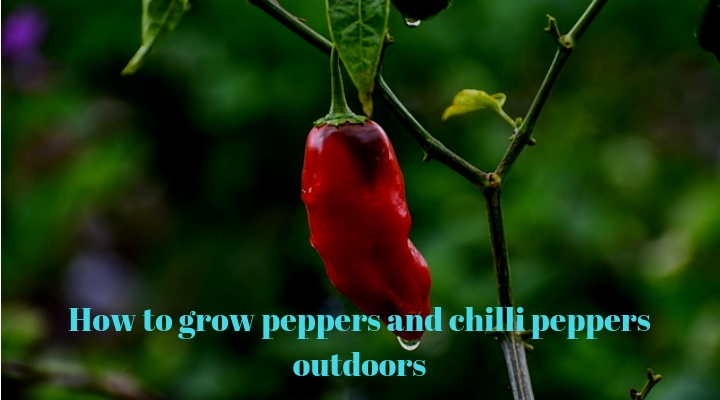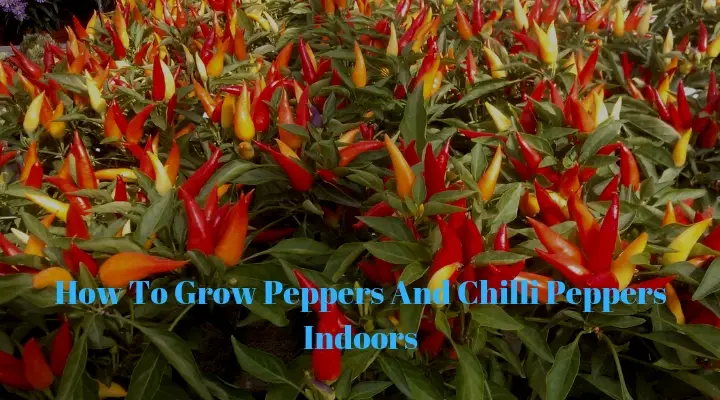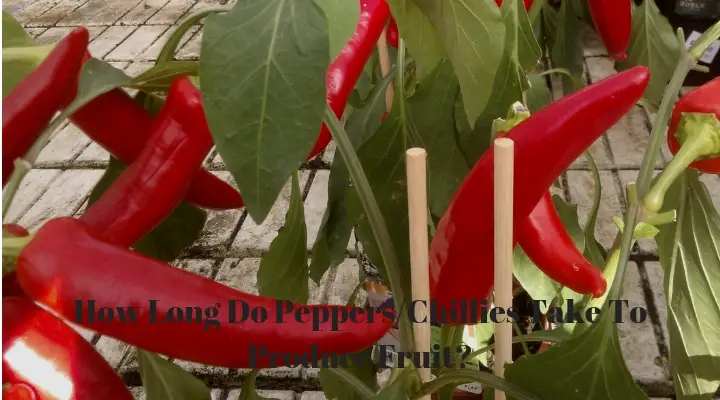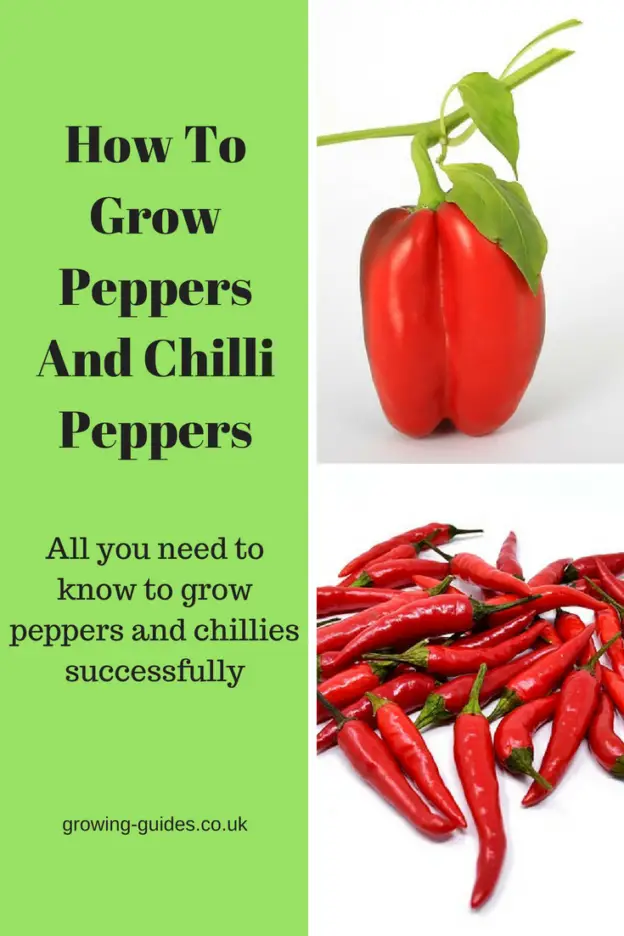I have had a few people ask me for the best way to grow peppers and chilli peppers lately, so this post is my answer to those questions. I’ll take you through the whole process from seed germination to harvesting. Here’s the best way I’ve found for how to grow peppers and chilli peppers.
How To Germinate Pepper And Chilli Pepper Seeds
Peppers and chilli peppers grow best in hot climates, so it’s best to give them some heat to start them off. There are 2 ways to do this, the first is to wait until the soil in your area warms up and then sow the seeds directly into the soil which can be a bit of a hit and miss affair. The second and the most successful way is to use the kitchen paper soaked in water and put in a zip lock bag in the airing cupboard or on top of the boiler method.
To germinate they need temperatures of between 18-21C (65-70F).
To see how to do this click here.
Once the seeds have germinated (check daily) usually 5-7 days, gently transfer them to a small pot. It is often easier and safer to tear the kitchen paper containing the seed and planting the seed with the paper still attached. Don’t worry the paper will rot down and will not affect the plants growth rate.
As the plant grows it will need to be potted on in the usual way, every 2-3 weeks until it is safe to plant outside (after last frosts).
Pinch out the growing tips when the plants are 8 inches tall to encourage a bushier plant. This will grow more fruit. As each new side shoot will bear fruit, giving more fruit per plant.
How To Grow Peppers And Chilli Peppers Out Doors

Prepare the soil by adding well rotted manure or compost add a handful of Epsom salts to prevent transplant stress. Plant each plant between 18-24 inches apart, give each plant a good soaking with water (don’t get the leaves wet aim for the base of the plant). Mulch around plants to keep moisture loss to a minimum and soak at least twice a week (more in very hot periods).
How To Grow Peppers And Chilli Peppers Indoors

As I live in the UK I have had the most success growing my peppers and chillies in a unheated greenhouse. This takes more water and it is advisable to use a large enough pot to allow the plant to grow to it’s full potential. In hot weather leave the vent and the greenhouse door open, not only to regulate temperature but also to allow access for pollinating insects.
Whether you grow indoors or out you will need to add supports to your plants as once they produce fruit they will become too heavy for the plant stems. Use sticks or tomato frames to tie the plants in as they grow.
How Long Do Peppers/Chillies Take To Produce Fruit?

Given the right conditions you should start seeing fruit appear between 80-90 days from sowing.
How To Harvest Peppers And Chillies
The more you harvest peppers and chillies the more they will produce. This is due to the wonders of nature. Reproduction is in the plants DNA therefore by picking often they will produce more fruit to produce seed.
With that in mind you don’t want to damage your plants when harvesting. I use secateurs to cut through the stem of the pepper/chilli but you can use scissors or a sharp knife or whatever you are comfortable with. Just as long as you don’t damage the plant.
Why You Should Not Get Leaves Wet When Watering
Peppers and chillies are prone to fungal infections, and fungal infections thrive in hot damp conditions. As peppers and chillies grow in hot conditions, by getting the leaves wet you are creating the perfect conditions for the infections to spawn.
Also in direct, hot sun plants can suffer from leaf burn if leaves are wet, and damaged leaves can’t photosynthesise. Photosynthesis is the process of turning sunlight and water into food used for the plant to grow.
Photosynthesis
The process by which green plants and some other organisms use sunlight to synthesize nutrients from carbon dioxide and water. Photosynthesis in plants generally involves the green pigment chlorophyll and generates oxygen as a by-product.
When To Feed Peppers And Chilli Peppers
Once the plants start to produce flowers, feed once a week with a good liquid feed. I have had the best results with home made comfrey plant food but there are plenty of shop bought alternatives if you don’t have access to any comfrey.
Why Have Pepper/Chilli Plants Got Yellow Leaves?
Usually this will either be due to a lack of water or a lack of nutrients in the soil. Other signs of this include flower drop and stunted growth. If this is the case it’s an easy fix (add water and/or plant food). Aphids and red spider mites can also cause yellow leaves so inspect your plants for signs of infestation.
In other cases, if the leaves yellow but also have brown spots or the leaves wilt then this is due to blight or some other type of disease or fungal infection and the plants will need to be destroyed as there is no known cure and you’ll not be able to grow any member of the nightshade family in this soil for at least one year.
Nightshade members include:-
- Peppers
- Chillies
- Aubergines
- Tomatoes
- Potatoes
Why Are Peppers And Chillies Not Producing Fruit?
If the plants are producing flowers, but the flowers drop off and don’t turn into fruit and it’s not the above, then you have a problem with pollination. You can improve the chances of attracting pollinating insects by Companion Planting with a variety of helpful plants including:-
- Basil – Basil not only attracts good insects but it also improves the flavour of any crop it is grown near.
- Chives -Chives attract many pollinators, deter aphids and improve the yield of the crops grown in companion to them.
- Dill-Dill also attracts pollinators and repels spider mites and aphids.
Whilst on the subject of companion planting, NEVER grow peppers or chillies near apricots as they are prone to a fungal infection that can seriously harm apricots.
If for any reason you do not get any pollinators, you can also hand pollinate the flowers using a small paint brush to find out how click here.
So that’s how to grow peppers and chilli peppers I think I’ve pretty much covered everything you’ll need to know to grow your own. If there is a question I haven’t answered or anything else you’d like to know contact me through the comments.

